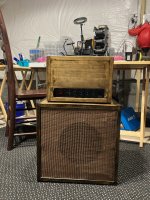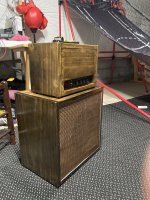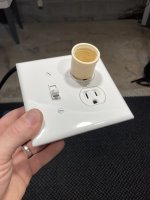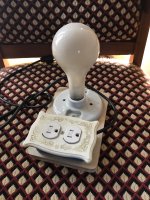Big Monk
Well-known member
While we’re sharing…
Not completed yet but in good enough shape for some progress pics.
I’ve basically reverse engineered the Black Version 3 Valve Junior board while adding some logical additions like a slot for a treble peaker cap, fixing the input resistors, adding NFB capability and adding a screen resistor for the EL84.
I made the faceplates in DipTrace as well.
A few notable snafus so far: I used my Large diode footprints for the UF4007 rectifier and heater diodes but did not increase the pad size when I copied them to my amplifier parts folder. So I had to solder the diodes to the top of the board. They are very sturdy so I’m not concerned but I did feel like a dope.
For some reason, my 1W resistor patterns were to narrow and the leads are slightly sucked in, which is fine but still annoying.
My 100n 630vDC footprints were the same error. Too narrow. Not a big deal.
I’m waiting on a 47u power supply filter cap because I ordered a 100u with spade style leads and it didn’t fit.
New JCM style lighted switch, IEC connector and rotary impedance selector. I expanded the Valve junior control set for by adding a Master (replaced grid leak with 250k), Volume becomes “Drive”, Presence Control and NFB control. NFB can be defeated and a normal 2.2u cathode bypass cap switched in.
Added a new handle to the head cab, finally put some grill cloth on the speaker cab and went with the black Marshall knobs.
Just need to make spade connector terminations on the transformers and output section and then fire her up:

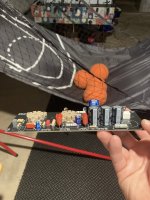
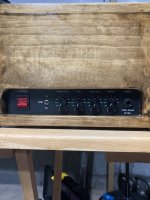
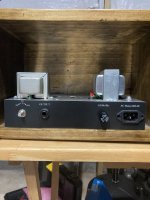
Not completed yet but in good enough shape for some progress pics.
I’ve basically reverse engineered the Black Version 3 Valve Junior board while adding some logical additions like a slot for a treble peaker cap, fixing the input resistors, adding NFB capability and adding a screen resistor for the EL84.
I made the faceplates in DipTrace as well.
A few notable snafus so far: I used my Large diode footprints for the UF4007 rectifier and heater diodes but did not increase the pad size when I copied them to my amplifier parts folder. So I had to solder the diodes to the top of the board. They are very sturdy so I’m not concerned but I did feel like a dope.
For some reason, my 1W resistor patterns were to narrow and the leads are slightly sucked in, which is fine but still annoying.
My 100n 630vDC footprints were the same error. Too narrow. Not a big deal.
I’m waiting on a 47u power supply filter cap because I ordered a 100u with spade style leads and it didn’t fit.
New JCM style lighted switch, IEC connector and rotary impedance selector. I expanded the Valve junior control set for by adding a Master (replaced grid leak with 250k), Volume becomes “Drive”, Presence Control and NFB control. NFB can be defeated and a normal 2.2u cathode bypass cap switched in.
Added a new handle to the head cab, finally put some grill cloth on the speaker cab and went with the black Marshall knobs.
Just need to make spade connector terminations on the transformers and output section and then fire her up:






